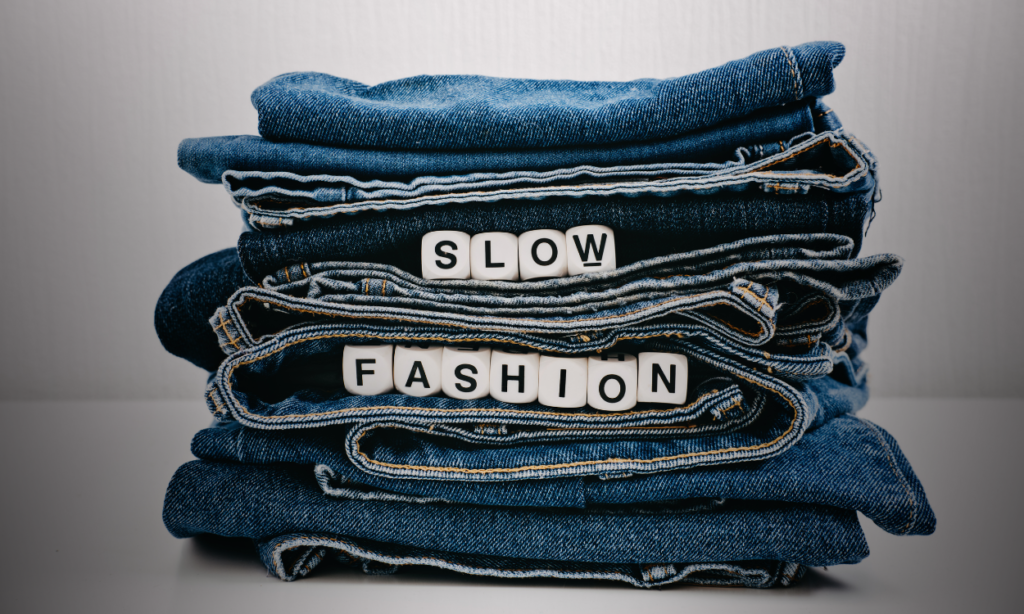
Climate targets and sustainability regulations are driving industries, including the fashion industry, to embrace eco-friendly trends and transform their future strategies. Over the next five years, most brands will face the challenge of balancing an increase in apparel consumption (63% to 102 million tons) with environmental sustainability.
Where should fashion executives prioritize in 2025?
Despite the improved positioning of sustainable fashion on the business agenda last year, fashion brands now seem to find 2025 particularly crucial. The reason for this is the difficult-to-overcome climate-related challenges and sustainability regulations, which could jeopardize apparel exports worth 65 billion by 2030.
Fashion businesses must struggle to adapt to the current industry trends by incorporating innovative materials and circular economy solutions that truly embody eco-friendly fashion. If anything is encouraging about this process, it is the percentage of consumers (around 80%) willing to pay for sustainable products. Let’s explore 4 key drivers of sustainable fashion in 2025.
The fashion sustainability scene in 2025 will feature progressions and changes. The most compelling change is the steadily upward trajectory of global fiber production in the apparel, footwear, home textiles, technical textiles, and hygiene markets.
According to the latest Materials Market Report from Textile Exchange, global fiber production reached an all-time high in 2023 of 124 million tonnes, and it predicts that will rise to 160 million tonnes in 2030 if current trends continue.
Unfortunately, the consumption of fiber carries significant environmental costs, including a CO2 footprint, water and pesticide consumption, and the release of microplastics. Additionally, the industry’s focus is often diverted due to concerns raised by inflation, global political tensions, and the rise of AI.
To support the evolution of sustainable fashion and trigger the environmental and social stimulus, the United States and the European Union have implemented sustainability regulations that will affect the fashion industry by 2025.
EU
United States
Fast vs. Sustainable Fashion. To stay competitive yet green enough, fashion brands must be well-disposed and fixed up with next-generation textiles and materials that can create exciting possibilities. Mirum, for example, is a plastic-free, plant-based alternative to leather, made from natural rubber, plant oils and waxes, natural pigments, and minerals. AMSilk uses recombinant bacteria to create Biosteel, a completely biodegradable fabric that is not harmful to the environment. Major brands, like Adidas shoes, have already used the fiber.
From plant-based materials such as eucalyptus cellulose and seaweed to seafood shell waste and mushrooms to compostable polyester substitutes, new-generation materials are constantly developed and infrastructurally improved while backed by long research to replace traditional materials. According to Beth Jensen, who is the senior director for climate and nature impact at Textile Exchange, this “will require the industry to continue to identify, research, and align on new solutions” .
Synthetic fibers can take up to 200 years to break down, so the fashion companies must switch mindsets and focus on more responsible production to eliminate waste while keeping the quality and durability of textiles without harming the environment.
What keeps sustainable fashion design progressing in the long run is the role of artificial intelligence. Production processes, similar to those in most industries, require optimization. AI systems can create practical decision models via the analysis of billions of data points. Designers can use AI to access the body measurements and wear patterns of their customers, enabling them to be more precise in production and prevent overproduction. More fashion players invest in this technology not only because it streamlines processes and innovates supply chains but also because it supports them in making more accurate predictions on popular designs without wasting fabric.
When it comes to circular fashion, technology and sustainability work together powerfully to propel it forward. The Circular Fashion Innovation Network leads technological advancement through its 2025 Technology Showcase. The focus remains on innovative material end-of-life solutions and repair technologies. While there is still significant progress to be made in textile-to-textile recycling, for instance, the Circ company is utilizing its technology to recover and reuse both cotton and polyester fibers into like-new textiles. Circular solutions are scaling up in regional and recycling hubs by utilizing AI-powered technologies that create new manufacturing ecosystems, supporting traditional and circular production models.
We anticipate groundbreaking innovations that will advance sustainable fashion in 2025. Virtual try-on technologies have already become a game-changing solution as they allow customers to virtually try on apparel, makeup, and other fashion products before they proceed to payment. Augmented reality and machine learning, or AI, replicate the in-store fitting experience. Most fashion brands have reported impressive results by using virtual try-ons and an increase in sales. However, the benefits extend beyond the measurable enhancement of customer experience and sales; in terms of sustainability, this technology eliminates the environmental footprint and waste that often arises from returns.
This year, blockchain technology will be mature enough to support fashion brands in enhancing supply chain transparency. The fashion industry has adopted this innovation to create secure, decentralized records throughout the product lifecycle.
Blockchain improves sustainability by:
Major brands like Breitling and Givenchy have implemented blockchain solutions for product authentication. This approach addresses the $450 billion annual counterfeit market, where consumers unknowingly make all but one of these purchases.
In recent years, the consumer landscape has undergone a continuous transformation. Three out of five shoppers agree that sustainability matters when choosing clothing. However, 56% of U.S. fashion buyers, according to a Statista Research survey, are hesitant to purchase eco-friendly clothes due to their high costs. By 2027, we expect the secondhand market to double in acceptance. Buying sustainable products should not be seen as a temporary trend; shoppers globally are more confident about this buying decision. Therefore, stores need to explore all available options and consider incorporating reselling options in response to the growing demand.
Consumers are seeking, reflecting, engaging, and becoming more aware of their consumption. This kind of awareness is on the rise. Over half of UK and German consumers feel responsible during their decisions and view sustainability as a vital factor when purchasing.
Gen Z, known for their high-intensity fashion purchases and returns, is a generation poised to drive change. Given that a significant portion of this generation looks up to digital voices for fashion inspiration, social media platforms have the potential to guide them towards more environmentally and ethically conscious habits and practices.
Locally, more shoppers are supporting smaller artisans and manufacturers who have a reduced environmental impact. This is a result of the limited production of products and their thoughtful design. By encouraging fair labor practices, protecting cultural history, and lowering the fashion industry’s impact on the environment, supporting local and small-scale production is more sustainable.

New regulations, innovations, and shifting consumer priorities will shape the path of sustainable fashion in 2025. Despite the relatively low number of fashion professionals who prioritize sustainability, the industry is undoubtedly undergoing unavoidable transformations due to stricter regulations and consumer demands. Fashion brands must recognize the chance to grow by adopting both new ideas and responsible practices to earn consumers’ trust and preference while protecting the environment. Once the industry accepts that this is the new normal, it will be a thriving moment for society and the planet.
EcoSkills is committed to empowering individuals and professionals to contribute meaningfully to this sustainable future across all industries.
